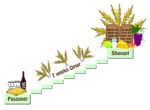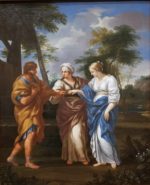Shofar and String Theory: Unfolding the Folded Dimensions
I. Introduction Every year on Rosh HaShanah, the raw, unarticulated cry of the shofar cuts through silence. For Kabbalah, that cry is not mere ritual
I. Introduction Every year on Rosh HaShanah, the raw, unarticulated cry of the shofar cuts through silence. For Kabbalah, that cry is not mere ritual
By Alexander Poltorak The Tree of Life and the Tree of Knowledge as Metaphors for the Wave Function and Measurement Summary This essay proposes a
And it came to pass, when he was come near to enter into Egypt, that he said unto Sarai his wife: “Behold now, I know
Abstract This essay explores the profound connections between language, philosophy, physics, and spirituality in the context of Rosh HaShanah. By examining the linguistic roots of

Introduction In this essay, I intend to draw a parallel between the singularity in space-time, such as the putative point of origin of the universe

The spectacle of the universe becomes so much the grander, so much more beautiful, the worthier of its Author, when one knows that a small

Cartesian dualism, or mind-body dualism, formulated by the French scientist, mathematician, and philosopher René Descartes (1596–1650), holds that the body and the mind (which he

This is the fourth installment in the series of essays on the nature of the soul. The first three installments can be found here: What

So the present passed over before him; and he himself lodged that night in the camp. And he rose up that night, and took his

There is a Biblical Commandment to count the days between the Passover and Shavuot, the “Feast of Weeks” (a.k.a. Pentecost). We start counting on the

Reading the Torah, sometimes, can give a false impression of reading a story, albeit the greatest story ever written. This Divine drama involves colorful characters,